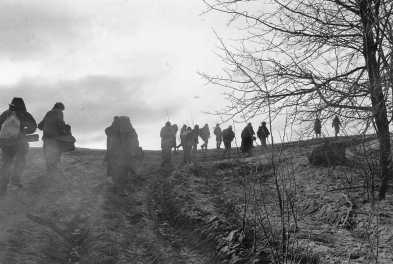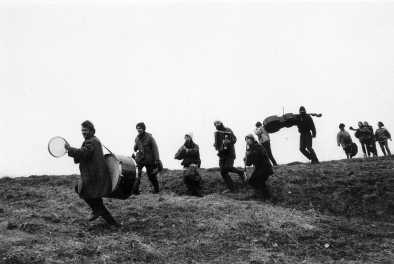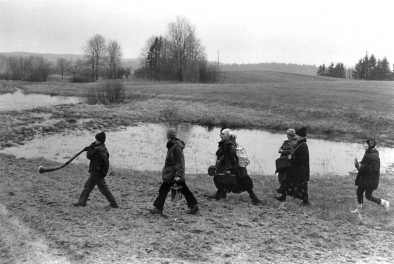11-042 jonkowo
węgajty 18
phone/fax: (0048-89) 5129297
art director: wacław sobaszek
 e-mail: wioskateatralna@gmail.com
how to get there
guest book
blog
links
e-mail: wioskateatralna@gmail.com
how to get there
guest book
blog
links
 e-mail: wioskateatralna@gmail.com
how to get there
guest book
blog
links
e-mail: wioskateatralna@gmail.com
how to get there
guest book
blog
links
cronicle
concert for the rose 5
November 2004
cronicle of the festival "theatre village" 12-25 July 2004
theatre workshops and Easter expedition 7-12 April 2004
TIKKUN concert 26 March 2004
carnival (ostatki, zapusty) 7-8 February 2004
cronicle of the festival "theatre village" 12-25 July 2004
theatre workshops and Easter expedition 7-12 April 2004
TIKKUN concert 26 March 2004
carnival (ostatki, zapusty) 7-8 February 2004
On the 5 November 2004, 7 p.m.
atthe "Węgajty" theatre centre
we had the pleasure to witness
CONCERT FOR THE ROSE (KONCERT DLA RÓŻY)
organised as part of support for Krzysztof Łepkowski, our friend and co-worker for many years, the founder of the Association "Green Commune" and the author of many an important cultural and ecological initiative.by: "FOR THE ROSE" Band
musicians:
Anna Broda - voice, dulcimer, drum
Witold Broda - violin, hurdy-gurdy, voice
Dariusz Korbański - clarinet, double-bass, mandolin
Janusz Prusinowski - violin, hurdy-gurdy, voice, accordion, double-bass
Adam Strug - voice, accordion
The band's repertoire encompasses among others: Polish dances, the music of Mazovia district, the music of the Polish Jews, songs of the Kurpie region, ballads

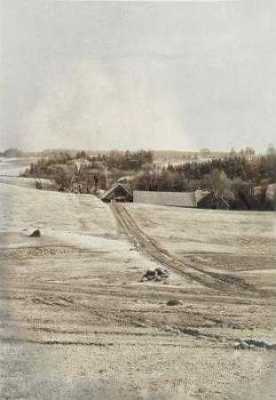 7-12 April, some theatre workshops took place, crowned by the Easter expedition. The workshops were run within the framework of "Other Theatre School".
7-12 April, some theatre workshops took place, crowned by the Easter expedition. The workshops were run within the framework of "Other Theatre School".
The Carpenter Night and the Blacksmith Day's Wife
An old mirror, dust on the surface, occupies the corner of the room. In front of it: the old carpenter, so old it seems he had always been there. You can see that in the mirror. A train of joyful dancers fleets past and vanishes somewhere in the depth... The world reflects itself. It is the Sun's light. A world is finding itself. The night dance is like a dream of liberation. The dancers are eternal. Between more-than-really silent hills, not unlike in Russian fables, a theatre springs. In the theatre, a tale. The old carpenter starts it at sunset, by marking the space. He is kneeling on the old floor with his hammer and his magic nails. It seems as though he knows the world underneath the floor... Later, the carpenter sits down by the dusty mirror. Mythical time opens up. The masks walk out. A satirically smiling face of an old farmer, dancing in his socks, living with his old mother and a ginger dog. The musician is listening to the sounds from the band and that makes him tell what drums used to be like in the olden days... His wife brings pictures of weddings and funerals. In one of the pictures - black figures in mist, before them: a little black coffin with a baby inside. A coffin of warm wood, still fluent with saps. On a beautiful Easter Monday- mirrors of water lead the way of the pageant among the hills, the sky joins fresh greenery there. It's sappy and the sunshine is lush. Music brings you into a trance, you sing a bridge. The stranger is me. We pass from the night into the day. From the impossible into the possible. Every threshold is my old threshold. I know every single house from within, before we step in. I look around in the new space. The bright space of Granny Maliszewska and the infinite space of the Dziadówek fields. Of the vast sky.
26 March, 8 p.m. in the theatre space of the theatre centre "Węgajty", a concert within the frames of the action "Help for Krzysztof"
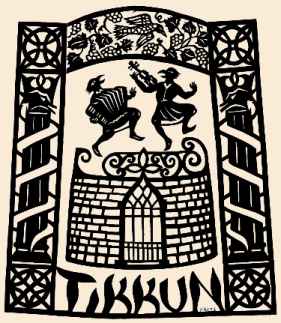
TIKKUN a word derived from Jewish mystics, means 'repairing the world, strive after restoring order and harmony, working for the sake of salvation.
A common project of Polish and American musicians, springing from klezmer and Hasidic tradition.
Inspired by photos by Tadeusz Rolke, from the cycle: "We were here" ("Tu byliśmy")
musicians:
Judith Bows - concertina, banjo
Alicja Hałas - drums, gordon
Stef Puchalski - violin, tuba
Jacek Hałas - accordion, hurdy-gurdy
Dorothea Hegeduess - clarinet
Ewa Wasilewska - violin
Bogusław Hegeduess - guitar, violin
Robert Wasilewski - dulcimer, viola
Maciej Filipczuk - violin
Piotr Pniewski - double bass
TIKKUN
The project of a cycle of concerts-improvisations entitled 'Tikkun' was born after Jacek Hałas had seen Tadeusz Rolke's photography exhibition called 'We Were Here', portraying places which had once been connected with the Chassidic movement in Poland.Pictures in which seemingly there is nothing interesting... a wobbly porch, a wall, a trace of a torn-down house... yet, beneath the plaster, or maybe round the corner - in the air - a print of light has been engraved... perhaps a sound, still vibrating delicately... 'We Were Here' is not a lament for the dead, it is more of a testimony for some presence - we were here, our tracks and paths shall stay here forever, we've left signs - if you can read them, we shall meet.
The exhibition took place in the French town of Die, during the festival 'Est-Ouest 2003' devoted to Polish culture and art, where among the guests there were also the music group Lautari. The exhibition, beautifully exposed in an old, round chapel outside the town, inspired the Lautari musicians to express their emotions and feelings towards the people and places present in the photographs. An improvised concert, lasting many hours, where their accumulated experience with Jewish music started to play, became a prayer, a meeting, a feast to which everyone brings something: be it wine, bread, curiosity, reflection, a whole heart - musicians as well as the audience.
Today we intend to continue our - very personal - meetings with Jewish culture. We are therefore very lucky to have with us the couple of our Jewish friends: the musicians Stefan Puchalski and Judith Bows from the USA. Knowing that they would come here, we couldn't but set up a cycle of concerts in Poland! Thus, we invited other friends - Jews and Poles - to create a klezmer 'orchestra' and set off for a journey with our musical tale.
The word 'klezmer', deriving from the Hebrew words 'kley' - 'vessel' and 'zemer' - song means 'a sound-transferring vessel' or, metaphorically, a 'singing instrument' This is how we see our presence in this project. The story of klezmer music is in a sense a 'musical soundtrack' of the life of Ashkenazi Jews. Awoken to life on the banks of the Rhine, developed in central-eastern Europe, it absorbed atmosphere of Poland, Ukraine, Romania, Russia, Hungary, music and culture of places where the Jewish diaspora has lived.
Therefore, we call to life a klezmer group, in order to journey together to a couple of singular places: synagogues, chapels, private houses - to sing on crossroads, to show Tadeusz Rolke's photos 'We Were Here' and, surrounded by them, play the music of the Jews, of Hasids, music which used to co-create Polish cultural landscape. We have also invited visual artists dealing with Jewish subjects ('Cabbal on Walls').
During our meetings we want to come closer to motifs which have created the common denominator for European traditions and Jewish culture, allowing for 'meeting' on human, social, cultural levels and their mutual enrichment by each other.
Our actions are to transgress the usual framework of a concert, we want to call into being events devoid of strict structure and spectacular character, and on the other hand open to the energy of places and people, mutual sensitivity, reciprocity, consonance, individuality, personal impressions, musical improvisations.
Our idea is 'concentrated celebration', restoring harmony, do Tikkun.
The authors of the project: Jacek Hałas, Maciej Filipczuk.

carnival (ostatki, zapusty) 7-8 February 2004
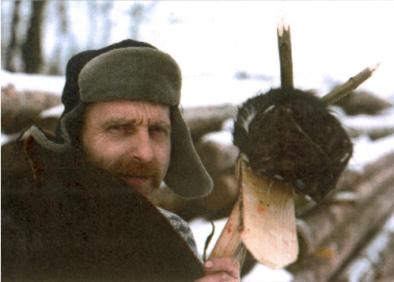
Carnival, in its most original, non-falsified form, can be treated as the source of theatre. You can see in it theatre's most primeval form, as well as draw from it inspiration, seeking new, actual theatre genres.
In many parts of the world, carnival constitutes a living tradition. Far from being a relic, it is not subject to reconstruction. Space-specific, predominantly urban, it is a phenomenon of broad social range. During our session of 7-8 February 2004, we had the pleasure to listen to a truly excellent specialist on such carnival forms. Wojciech Dudzik, a theatrologist, lecturer at the Institute of Polish Culture of the University of Warsaw and, before that, of the University of Tuebingen, is a specialist in the field of Western European carnival. Dudzik told us about the most fascinating carnival centres in Europe. He also shared with us the impressions fromhis last journey to Bulgaria.
During the carnival session we had also he pleasure to listen to Trev Hill, a Scottish puppeteer and theatre director as well as the author of Ph. D. dissertation on Theatre Węgajty's fieldwork expeditions. Another apt speaker of the session was the filmmaker Waldemar Czechowski, among others the author of the film Śladami Stanisława Vincenza (In the Footsteps of Stanislaw Vincenz), recently occupied with the documentation of Swiss carnivals.
Another of our guests was the Skopje-based ethnologist Vladimir Bocev, very well known and welcome in Węgajty as well as Olsztyn. Vladimir Bocev organised in Macedonia an international symposium on mask ritual.
*
At the base of the concept of the carnival show Ostatki, zapusty lies the idea of bringing ritual theatre into the space of the city. First, in December and January, we go for carolling expeditions to far-away places, to the verge of the country, to the mountains. Then, in the space of the house in a tiny village, theatre of great energy is reborn. When we do the carnival show, we try to bring traces of this energy to specific spots of urban space. These are places like: shelters for the homeless, care centre, social care house, mental hospital, prison and others.
The musical, choreography and visual motifs come from various cultures, religions and confessions and therefore we call our show 'syncretic'.
Carnival is the time of transformation; the old must change into the new. We bring back old scenes, we also use old animal masks of museum value, like the 'Szemel' -the white horse coming from here, from Warmia, and the Goat. Each year, however, with the help of young adepts, we create new masks and improvisations.
This year, the final performance of the show took place exactly where the masks of Szemel and the goat were found, in Węgajty village. The village is a place of ever new and important social and environmental initiatives. Among them, there is the combined effort for the re-cultivation of the pond, memorable as the scenery for 'Sobótki' ('Midsummer Night's Play'); construction of the ceramics kiln and oven and the ceramics workshops of Iza Nowik and Sławomir Barański; activity of the local capoeira group.
Wacław Sobaszek

up
design: © Grzegorz Kumorowicz 



